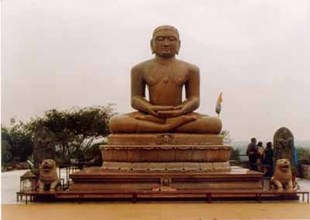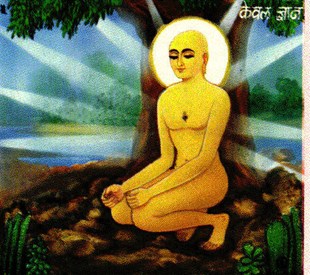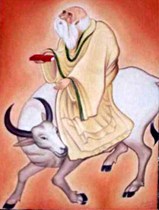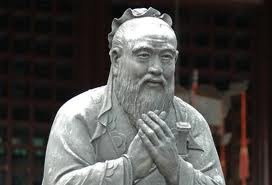V.S.Gopalakrishnan
It is indeed extraordinary, as we all know it, that the major religions in the world have had their birth in the Asian continent. And religions concern themselves with gods. And here gods, with varying names, are generally the creators, the unseen and the almighty. What is interesting is that some spiritual heads that lived and walked amongst the earthly beings have been given the status of gods.
In Christianity, the God is not human. Jesus who lived in flesh and blood is regarded as the son of god. In Islam, god is Allah, and Mohammad (570-632 AD) was his mouthpiece, a Prophet. Hinduism has envisaged ten avatars in human form. They are worshipped as deities but strictly speaking the Hindu godhead is just one para-Brahman. Our Vedic gods like Indra, Varuna, Surya etc and the Pauranic Gods like Vishnu, Shiva, Ganesha and our goddesses like Laxmi, Saraswathy etc have particular roles, attributes, personal history, and specific areas where they discharge their benedictions. We thus have multiple deities which are worshipped but the Supreme Deity is one.
The “Shinto” religion (shin=gods; to=ways) that is several thousand years old and is still popular in Japan is nothing but nature-worship. I have visited some lovely Shinto temples in Japan. There are 8 million gods in Shinto religion covering seas, rain, fertility, healing, hills, trees, rocks etc. Though polytheistic, Shintoism is basically animistic and there are no gods’ images as such. Shintoism has no founder and was greatly influenced by Buddhism. The resulting fusion is known as “Shinbatsu” (shin=Shinto; batsu=Buddha). From the Meiji Restoration of 1868 till 1945, Shinto was the declared State Religion of Japan.
But then which are the men that have become gods or demi-gods? Five major names here are Zoroaster of Persia, Buddha and Mahavira of India, and Lao-Tzu and Confucius of China. How strange it is that all of them were contemporaries! Let us consider their dates:
Zoroaster 628-551 BC
Mahavira 599-527 BC
Buddha 583-463 BC
Lao-Tzu 604- NA BC
Confucius 551-479 BC
Mahavira (whose real name was Nataputta Vardhamana) and Buddha (Siddharta Gautama) who are deified and worshipped in temples, never met each other though they came from and preached in the same region. However, Lao-Tzu and Confucius who are also deified and worshipped in temples, are said to have met each other. Zoroaster is considered a Prophet and Zoroastrian temples are meant to worship fire and not his image.
We all have a good idea about the life of Mahavira and Buddha and about their preaching. We have an idea about how their images look like in temples dedicated to them. Mahavira’s statues are normally in sitting padmasana postures with hand upon hand, and sometimes the Digambar images could be standing postures. In paintings, Mahavira is sometimes shown in a peculiar milkman (goduhasan) posture in which he attained entertainment.

(above: Mahavira in padmasana, with hand over hand)

(above: Mahavira's milkman posture at enlightenment)
The Buddha images are also usually in padmasana but varying mudras are possible such as (1) bhumisparsha mudra (right hand touching the ground in token of calling earth as witness when his enlightenment took place) (2) abhaya mudra (3) dhyana mudra (4) varada mudra etc. Standing buddhas are not as common. The reclining Buddha image is popular in South East Asia and that is the posture in which he attained nirvana (death).
LAO-TZU
Lao-Tzu was strictly speaking a philosopher. His philosophy (and religion) is called Taoism (Tao=way). He was a Government Librarian effectively. Taoism is an inward-looking religion and basically handles mind, spirituality and attitudes, and the nature of universe and life. “Tao” pervades the universe and is the source of all beings. The balance of life is made by yin and yang (negatives and positives). Lao-Tzu believed that search for any kind of knowledge is useless. He condemned corruption in the government which reminds us about what is happening with us in India of today! Taoists believed in paradises without rulers. Taoists eschewed passion, ambition and sought self-effacement. Under the influence of Mahayana Buddhism,
Taoism changed in character and it developed a belief in heaven and hell and in immortal soul. Lao-Tzu was elevated to the position of God during the rule of some Dynasties and temples were built for him. Taoism and temples for Lao-Tzu are comparatively more rampant in Taiwan than in main China.
How is the image of Lao-Tzu depicted? He is depicted with an old face, a bald head and with a long beard. He spent such a long time in his mother’s womb that he was born old. This is essentially allegorical in order to depict his wisdom. He is shown to be riding a buffalo, concerning which there are interesting stories.

(above: Lao Tzu as old, bald man, on a buffalo)
CONFUCIUS
Confucius is the Latin name for Kung Fu Tzu. He was a Minister, who gave up his job and opened schools. He was basically an ethical thinker. He spoke mostly about “Li”, reverence for nature, life and ancestors. He laid down rules for correct relationship in five categories (1) Between father and son (2) husband and wife (3) elder and younger brother (4) two friends (5) ruler and subjects. Morals and virtues were held out to be paramount in everyone’s life. Confucius was opposed to monastic order and ascetic practices and saw no need for preachers. However, he was in favour of rituals and sacrifices to god including animal sacrifices.
Temples for Confucius came up and animal sacrifices therein became common practice.
How is Confucius depicted and what does his image look like? His representation generally pertains to the moment when he met Lao Tzu. In humility, while standing, he crosses his hands upon his chest. As a wise man he is shown to have a beard, but he is not bald or very old as Lao Tzu is shown. The temples for Confucius have only tablets representing him.

(above: Confucius with folded hands upon the chest in humility)
We have now entered a new era of human gods with temples for Rajnikant, MGR, Tendulkar and others springing up here and there!
(pics from Net)
=================
It is indeed extraordinary, as we all know it, that the major religions in the world have had their birth in the Asian continent. And religions concern themselves with gods. And here gods, with varying names, are generally the creators, the unseen and the almighty. What is interesting is that some spiritual heads that lived and walked amongst the earthly beings have been given the status of gods.
In Christianity, the God is not human. Jesus who lived in flesh and blood is regarded as the son of god. In Islam, god is Allah, and Mohammad (570-632 AD) was his mouthpiece, a Prophet. Hinduism has envisaged ten avatars in human form. They are worshipped as deities but strictly speaking the Hindu godhead is just one para-Brahman. Our Vedic gods like Indra, Varuna, Surya etc and the Pauranic Gods like Vishnu, Shiva, Ganesha and our goddesses like Laxmi, Saraswathy etc have particular roles, attributes, personal history, and specific areas where they discharge their benedictions. We thus have multiple deities which are worshipped but the Supreme Deity is one.
The “Shinto” religion (shin=gods; to=ways) that is several thousand years old and is still popular in Japan is nothing but nature-worship. I have visited some lovely Shinto temples in Japan. There are 8 million gods in Shinto religion covering seas, rain, fertility, healing, hills, trees, rocks etc. Though polytheistic, Shintoism is basically animistic and there are no gods’ images as such. Shintoism has no founder and was greatly influenced by Buddhism. The resulting fusion is known as “Shinbatsu” (shin=Shinto; batsu=Buddha). From the Meiji Restoration of 1868 till 1945, Shinto was the declared State Religion of Japan.
But then which are the men that have become gods or demi-gods? Five major names here are Zoroaster of Persia, Buddha and Mahavira of India, and Lao-Tzu and Confucius of China. How strange it is that all of them were contemporaries! Let us consider their dates:
Zoroaster 628-551 BC
Mahavira 599-527 BC
Buddha 583-463 BC
Lao-Tzu 604- NA BC
Confucius 551-479 BC
Mahavira (whose real name was Nataputta Vardhamana) and Buddha (Siddharta Gautama) who are deified and worshipped in temples, never met each other though they came from and preached in the same region. However, Lao-Tzu and Confucius who are also deified and worshipped in temples, are said to have met each other. Zoroaster is considered a Prophet and Zoroastrian temples are meant to worship fire and not his image.
We all have a good idea about the life of Mahavira and Buddha and about their preaching. We have an idea about how their images look like in temples dedicated to them. Mahavira’s statues are normally in sitting padmasana postures with hand upon hand, and sometimes the Digambar images could be standing postures. In paintings, Mahavira is sometimes shown in a peculiar milkman (goduhasan) posture in which he attained entertainment.

(above: Mahavira in padmasana, with hand over hand)

(above: Mahavira's milkman posture at enlightenment)
The Buddha images are also usually in padmasana but varying mudras are possible such as (1) bhumisparsha mudra (right hand touching the ground in token of calling earth as witness when his enlightenment took place) (2) abhaya mudra (3) dhyana mudra (4) varada mudra etc. Standing buddhas are not as common. The reclining Buddha image is popular in South East Asia and that is the posture in which he attained nirvana (death).
LAO-TZU
Lao-Tzu was strictly speaking a philosopher. His philosophy (and religion) is called Taoism (Tao=way). He was a Government Librarian effectively. Taoism is an inward-looking religion and basically handles mind, spirituality and attitudes, and the nature of universe and life. “Tao” pervades the universe and is the source of all beings. The balance of life is made by yin and yang (negatives and positives). Lao-Tzu believed that search for any kind of knowledge is useless. He condemned corruption in the government which reminds us about what is happening with us in India of today! Taoists believed in paradises without rulers. Taoists eschewed passion, ambition and sought self-effacement. Under the influence of Mahayana Buddhism,
Taoism changed in character and it developed a belief in heaven and hell and in immortal soul. Lao-Tzu was elevated to the position of God during the rule of some Dynasties and temples were built for him. Taoism and temples for Lao-Tzu are comparatively more rampant in Taiwan than in main China.
How is the image of Lao-Tzu depicted? He is depicted with an old face, a bald head and with a long beard. He spent such a long time in his mother’s womb that he was born old. This is essentially allegorical in order to depict his wisdom. He is shown to be riding a buffalo, concerning which there are interesting stories.

(above: Lao Tzu as old, bald man, on a buffalo)
CONFUCIUS
Confucius is the Latin name for Kung Fu Tzu. He was a Minister, who gave up his job and opened schools. He was basically an ethical thinker. He spoke mostly about “Li”, reverence for nature, life and ancestors. He laid down rules for correct relationship in five categories (1) Between father and son (2) husband and wife (3) elder and younger brother (4) two friends (5) ruler and subjects. Morals and virtues were held out to be paramount in everyone’s life. Confucius was opposed to monastic order and ascetic practices and saw no need for preachers. However, he was in favour of rituals and sacrifices to god including animal sacrifices.
Temples for Confucius came up and animal sacrifices therein became common practice.
How is Confucius depicted and what does his image look like? His representation generally pertains to the moment when he met Lao Tzu. In humility, while standing, he crosses his hands upon his chest. As a wise man he is shown to have a beard, but he is not bald or very old as Lao Tzu is shown. The temples for Confucius have only tablets representing him.

(above: Confucius with folded hands upon the chest in humility)
We have now entered a new era of human gods with temples for Rajnikant, MGR, Tendulkar and others springing up here and there!
(pics from Net)
=================

Simple details om asian religions with nice pictures of those great spiritually liberated souls who founded these great religion
ReplyDelete